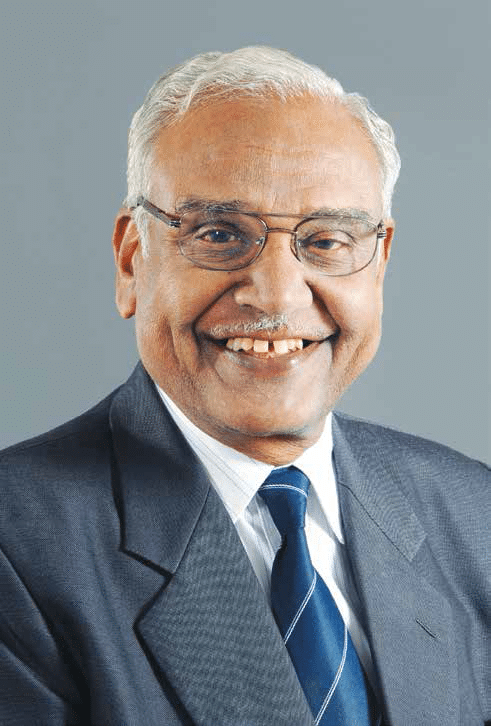

Chairman, Board of Governors, IIT-Kanpur
M Anandakrishnan, Chairman, Board of Governors, IIT-Kanpur, talks about the need for accreditation in Indian education
Accreditation for ensuring quality in higher education has been in India for two decades, with bodies like National Assessment and Accreditation Agency (NAAC) for institutional accreditation and the National Board of Accreditation (NBA) for programme accreditation. These agencies track the changing national and global accreditation criteria standards and formulate them for the Indian context.
However, many higher educational institutions, including several premier institutions, appear to be uninterested in accreditation. Some look upon accreditation as a status symbol, while some use it as a marketing tool for enticing students.
Autonomy of Accrediting Agencies
It has been suggested that accreditation agencies need to be independent of regulatory bodies. The NBA has set an example by being delinking itself from the regulatory body, All India Council of Technical education (AICTE). NAAC too is becoming autonomous from University Grants Commission (UGC). It is hoped that the medical and law programmes will soon have accredited agencies independent of Medical Council of India (MCI) and Bar Council of India (BCI). Likewise, distance education institutions and programmes need to be accredited by agencies independent of Distance Education Council (DEC).
Mandatory Accreditation
India is moving towards mandatory accreditation of institutions and programmes under UGC and the AICTE. This applies to all universities established or incorporated by, or under a Central, Provincial or State Act, all deemed universities, all institutions including technical institutions, and all colleges including autonomous colleges.
Non-compliance of the mandatory accreditation will lead to the regulatory bodies or funding agencies de-recognising the institution, making them ineligible for financial assistance. Conversely, a higher accreditation may attract higher funding. Employers too prefer graduates from accredited institutions, while getting visas to some countries is easier with qualifications from accredited schools.
Accreditation Objectives
While accrediting an institution, UGC and AICTE do a critical appraisal of the institution’s quality assurance and improvement, assurance that the institutions and programmes meet and exceed the prescribed norms, ensure that the academic aims and objectives of the institution are honestly pursued and effectively achieved, assesses the institution’s ability to maintain the relevance of the programmes during accreditation’s validity period. These objectives aim accord recognition to the quality and excellence of education in higher educational institutions to help students and stakeholders make informed choices, while facilitating the institutions to augment their quality by benchmarking reference points pertaining to academic standards. They also help the institutions in acquiring international recognition, international collaborations, helping the teachers achieve and maintain teaching and research standards. They also help higher educational institutions in introducing governance mechanisms in their management and administration.
Setting the Criteria
The accreditation criterion needs to be comprehensive and include process parameters such as the approach to teaching, learning and evaluation, student-teacher interaction, guidance counselling, and socially relevant activities. It should also include the institution’s management, autonomy, interference, transparency and ethics. It should emphasize the “outcome parameters”.
NAAC and NBA develop the accreditation criteria. These are common to both bodies, and subject to change to reflect the changing ground realities. Care needs to be taken that the criteria do not stifle innovations. The criteria and the processes should be explicitly documented for the benefit of the educational institutions. In this, NBA has set a good example by publicly presenting comprehensive documentation for UG, PG, Diploma, Pharmacy, MCA, MBA courses, along with guidelines for accreditation visits, guidelines for evaluation, manual for self assessment report (SAR) and evaluation report covering Tier-I and Tier-II technical institutions.
The difficulties in defining and evaluating on the criteria are formidable. For instance, it is difficult to assess and quantify the teaching and learning processes and its impact, and so, will need proxy parameters. Also, comparing the quality and impact of teaching across countries is difficult. But despite these difficulties, we must strive to ensure seamless adoption of the accreditation systems.
The Challenges
Considering the large number of universities and colleges and the number of professional programmes they run, mandatory accreditation poses an enormous challenge. It is achievable only by roping in multiple accrediting agencies in various specializations, all following the norms and standards set by an accreditation authority. NAAC can be turned into an accreditation authority for universities and general colleges, and NBA for technical education colleges and technical education departments of universities. We need similar authorities for medicine, law and distance education as well. When multiple organizations are involved in such a sensitive task, special care is needed to ensure objectivity and credibility. There are so many different accrediting agencies around the world, that some institutions may resort to them in order to avoid mandatory accreditation in India. It is necessary to ensure that respectable foreign accrediting agencies such as Accreditation Board of Engineering and technology (ABET) do not accredit Indian institutions. Recently the Association to Advance Collegiate Schools of Business (AACSB) announced new accreditation standards for business schools. Two Indian private management schools have been accredited by AACSB.
It is also important to prevent the fraudulent ‘Accreditation Mills’ from abroad providing accreditation to gullible Indian Institutions.
“It is hoped that the medical and law programmes will soon have accredited agencies independent of Medical Council of India (MCI) and Bar Council of India (BCI)”
Need for Innovation in Accreditation Process
Established accreditation authorities should accord high priority for evolving a process of accreditation that will eliminate or minimize the need for site visits. This will require designing an online data submission system and developing an analytic programme to process the data according to prescribed norms and standards. Such a system should include severe penalties for furnishing wrong or misleading data by institutions. It system will obviate the need for multiple accrediting agencies.






















